Hybrid is Here to Stay: How to Create an Inviting Office with Furniture to Get Your Employees Back in Gilbert, AZ
The shift to hybrid work models has transformed the modern workplace, blending remote and in-office work in a way that offers employees greater flexibility and autonomy. This trend has surged in popularity, particularly after the global pandemic highlighted the feasibility and benefits of remote work. However, as businesses in Gilbert, AZ, and beyond embrace this new normal, they face the challenge of making the office an appealing destination that employees want to return to.
Creating an inviting office environment is crucial for fostering a positive work culture and enhancing productivity. A well-designed workspace can significantly impact employee morale, collaboration, and overall job satisfaction. When employees feel comfortable and inspired by their surroundings, they are more likely to engage fully with their tasks and colleagues, driving the success of the hybrid model.
This article aims to provide actionable tips for businesses in Gilbert, AZ, to design an inviting office space that caters to the needs of their hybrid workforce. From selecting the right furniture to creating collaborative and relaxation areas, we’ll explore various strategies to make your office a place where employees are excited to work. By implementing these tips, you can ensure your office environment supports the hybrid work model and attracts employees back to the office with enthusiasm.

Cubicles workstation electric desks and storage
The New Era of Hybrid Work
Understanding the Hybrid Work Model
The hybrid work model is a flexible approach that combines remote and in-office work, allowing employees to split their time between the two environments. This model offers the best of both worlds, giving employees the flexibility to work from home while still providing opportunities for in-person collaboration and engagement at the office. Benefits of the hybrid work model include improved work-life balance, increased productivity, and reduced commuting time, which can lead to higher job satisfaction and employee retention.
The rise of hybrid work gained momentum post-pandemic, as businesses were forced to adapt to remote work during lockdowns. Many companies discovered that employees could maintain, or even exceed, productivity levels while working from home. This realization has driven a permanent shift toward hybrid models, with businesses recognizing the need to offer flexible work options to attract and retain talent.
Statistics on hybrid work adoption reflect this significant shift. According to a 2023 report by Gallup, 55% of employees in the U.S. now work in a hybrid model, with expectations that this number will continue to grow. Furthermore, a survey by McKinsey found that 80% of employees enjoy working in a hybrid model and want to continue doing so. These numbers underscore the enduring nature of hybrid work and highlight the importance for businesses to create inviting office spaces that support this new era of work.
The Importance of a Welcoming Office Environment
Employee Preferences for Office Environments
Employees today have clear preferences when it comes to their office environments. They seek spaces that are not only functional but also comfortable, aesthetically pleasing, and conducive to both individual and collaborative work. A welcoming office environment with elements like natural light, ergonomic furniture, and thoughtfully designed common areas can significantly enhance the overall work experience. Employees appreciate spaces that make them feel valued and motivated, driving their desire to spend time in the office.
Impact of Office Ambiance on Productivity and Morale
The ambiance of an office plays a crucial role in influencing productivity and morale. A well-lit, clean, and organized workspace can boost focus and efficiency, while a cluttered, poorly lit environment can lead to distractions and decreased productivity. Additionally, the use of colors, textures, and decor that resonate with employees can create a positive atmosphere, fostering creativity and engagement. An inviting office ambiance contributes to a sense of well-being, reducing stress levels and enhancing overall job satisfaction.
The Role of Office Design in Employee Retention
Office design is a key factor in employee retention. A thoughtfully designed workspace that meets the diverse needs of employees can be a strong incentive for them to stay with a company. When employees feel comfortable and inspired by their work environment, they are more likely to develop a stronger connection to their workplace and remain committed to their employer. Investing in quality office design not only enhances the daily work experience but also signals to employees that their well-being is a priority. This investment in office design can result in higher retention rates, saving businesses the costs associated with high employee turnover.

Open Plan Office Desks and Chairs with Brick Wall
Designing an Inviting Office Space
Key Elements of Modern Office Design
Open vs. Closed Office Layouts
When designing a modern office, one of the first considerations is the choice between open and closed office layouts. Open office layouts promote collaboration, transparency, and communication by removing physical barriers. This design fosters an inclusive atmosphere where ideas can flow freely among employees. However, open layouts can also lead to distractions and noise, which can be mitigated by incorporating quiet zones and meeting pods. Conversely, closed office layouts provide privacy and reduce noise, making them ideal for tasks that require deep concentration. A hybrid approach that combines both open and closed elements often works best, catering to diverse work styles and tasks.
Importance of Natural Light and Ventilation
Natural light and ventilation are critical components of a healthy and inviting office environment. Exposure to natural light has been shown to improve mood, energy levels, and overall well-being, which in turn boosts productivity. Large windows, skylights, and open spaces can maximize the availability of natural light. Additionally, proper ventilation ensures a steady flow of fresh air, reducing the concentration of indoor pollutants and enhancing cognitive function. Investing in high-quality HVAC systems and incorporating plants can further improve air quality and create a refreshing, vibrant workspace.
Ergonomics and Employee Health
Ergonomics is essential for promoting employee health and preventing work-related injuries. Ergonomic office design involves selecting furniture and equipment that support the body’s natural posture and movements. Adjustable chairs, sit-stand desks, and monitor stands can help reduce the risk of musculoskeletal disorders and enhance comfort. Providing ergonomic training and encouraging employees to take regular breaks to stretch can also contribute to a healthier workplace. By prioritizing ergonomics, businesses can enhance employee well-being, reduce absenteeism, and increase productivity.
Choosing the Right Office Furniture
Types of Furniture that Enhance Comfort and Productivity
Selecting the right office furniture is crucial for creating a comfortable and productive work environment. Desks with ample workspace, adjustable chairs, and supportive seating options are fundamental. Additionally, providing a variety of furniture types, such as lounge chairs, collaborative tables, and individual workstations, can cater to different work preferences and activities. Quality materials and construction ensure durability and long-term satisfaction.
The Role of Ergonomic Furniture
Ergonomic furniture plays a pivotal role in maintaining employee health and productivity. Ergonomic chairs with adjustable height, lumbar support, and armrests can prevent back pain and improve posture. Sit-stand desks allow employees to alternate between sitting and standing, reducing the risks associated with prolonged sitting. Ergonomic accessories like keyboard trays, footrests, and monitor arms can further enhance comfort and reduce strain. Investing in ergonomic furniture demonstrates a commitment to employee well-being and can lead to higher job satisfaction and performance.
Examples of Modern Office Furniture Trends
Modern office furniture trends emphasize flexibility, sustainability, and aesthetics. Modular furniture systems allow for easy reconfiguration to accommodate changing needs. Sustainable furniture made from recycled materials and environmentally friendly processes is gaining popularity. Additionally, furniture with integrated technology, such as desks with built-in charging ports and wireless connectivity, supports the seamless integration of digital tools. Sleek, minimalist designs and vibrant, customizable options are also trending, reflecting the contemporary office’s dynamic and personalized nature.
Creating Collaborative Spaces
Importance of Collaboration in a Hybrid Model
In a hybrid work model, fostering collaboration is essential for maintaining team cohesion and innovation. Collaborative spaces facilitate spontaneous interactions, brainstorming sessions, and teamwork, which are vital for creative problem-solving and project development. These areas can bridge the gap between remote and in-office employees, ensuring that everyone feels included and connected.
Furniture Solutions for Collaborative Work Areas
Furniture solutions for collaborative spaces should be versatile and adaptable. Movable tables, modular seating, and writable surfaces encourage creativity and flexibility. Large communal tables and lounge areas with comfortable seating can accommodate group discussions and casual meetings. Incorporating technology, such as video conferencing equipment and interactive displays, can enhance collaboration between remote and in-office team members.
Examples of Successful Collaborative Spaces
Successful collaborative spaces often feature a blend of functionality and inspiration. For example, Google’s offices include open lounges, standing meeting rooms, and creatively designed brainstorming areas. These spaces are equipped with flexible furniture and vibrant decor to stimulate creativity. Another example is the headquarters of IDEO, a global design company, which boasts various collaborative zones with modular furniture, whiteboards, and writable walls to support dynamic team interactions. These examples highlight the importance of creating spaces that are not only practical but also visually and mentally stimulating.
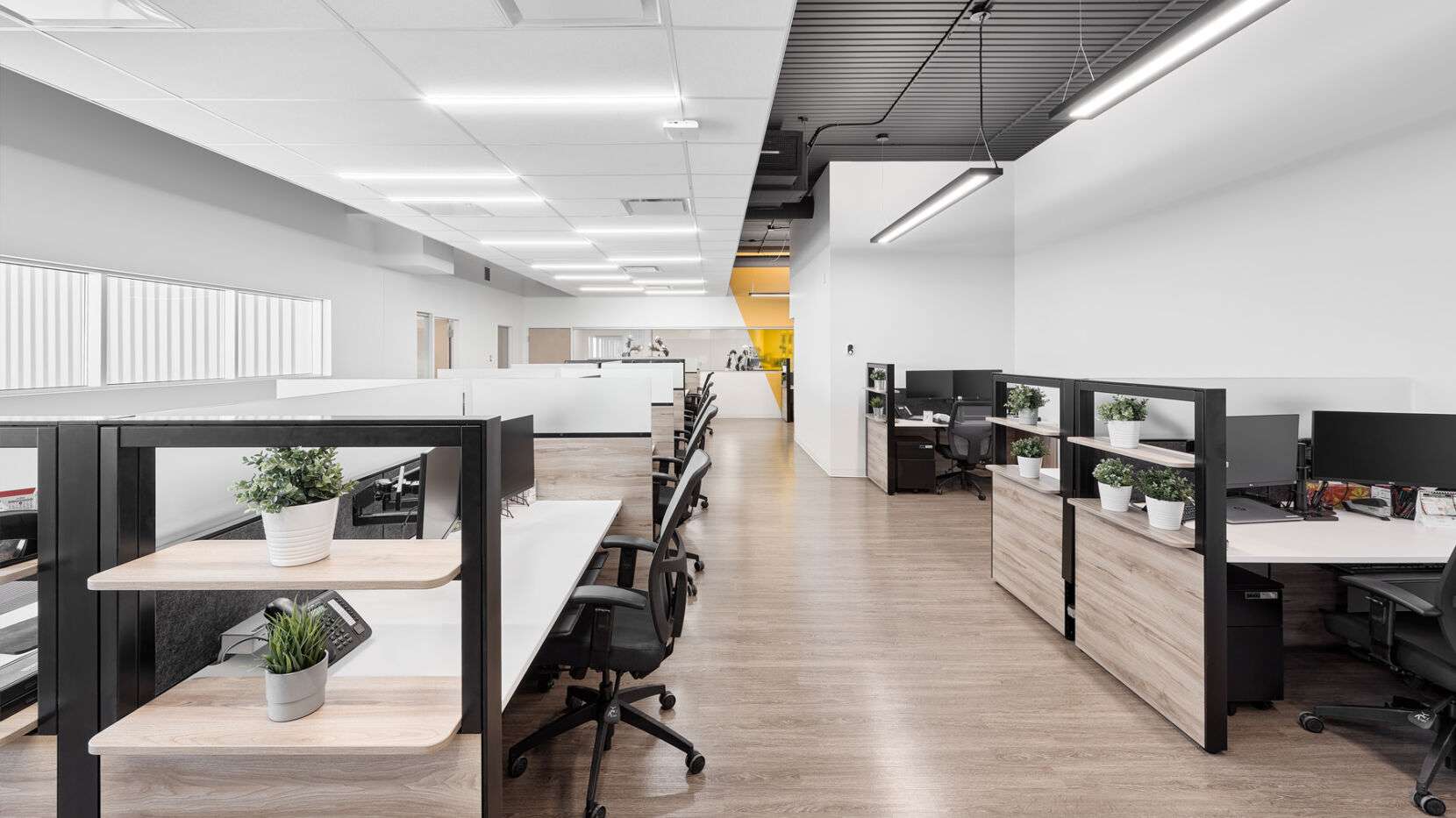
Office Furniture Open Plan Office Planter Shelves Mesh Chairs
Practical Tips for Office Furniture Selection
Budget-Friendly Furniture Options
High-Quality, Affordable Furniture Brands
Finding high-quality, affordable furniture is essential for creating an inviting office without breaking the bank. There are brands that offer a range of stylish and functional office furniture at reasonable prices. These brands provide a variety of options that can fit different budgets and design preferences, from ergonomic chairs and adjustable desks to storage solutions and collaborative furniture.
Tips for Stretching Your Office Furniture Budget
Stretching your office furniture budget requires strategic planning and smart shopping. Start by prioritizing essential items and focusing on pieces that offer the most significant impact on comfort and productivity. Consider buying in bulk to take advantage of discounts, and don’t hesitate to explore second-hand options or refurbished furniture, which can provide excellent value for money. Additionally, look for sales, clearance events, and online marketplaces where you can find quality items at reduced prices.
Case Studies of Successful Budget-Friendly Office Setups
Several companies have successfully furnished their offices on a budget without compromising quality. For instance, a tech startup in Austin, TX, transformed its workspace by combining new IKEA desks and chairs with second-hand lounge furniture from local thrift stores. This approach allowed them to create a vibrant, functional office while staying within their budget. Another example is a marketing agency in New York that utilized open shelving and minimalist furniture from Wayfair, achieving a modern look at a fraction of the cost. These case studies demonstrate that with careful planning and creativity, it’s possible to design an attractive office space without overspending.
Customizing Furniture to Reflect Company Culture
The Significance of Personalized Office Spaces
Personalized office spaces play a crucial role in reflecting company culture and enhancing employee engagement. Customizing your office furniture to align with your brand identity can create a sense of belonging and pride among employees. Personalized spaces that incorporate company values and aesthetics make the office more inviting and memorable for both employees and visitors.
Incorporating Brand Colors and Themes into Furniture Choices
Incorporating brand colors and themes into furniture choices can help reinforce your company’s identity. Use your brand’s color palette to select furniture pieces that reflect your corporate image. For example, if your brand colors are blue and white, consider blue ergonomic chairs, white desks, and matching accessories. Themed furniture, such as collaborative tables shaped like your logo or chairs with custom upholstery, can also add a unique touch to your office design.
Employee Input in Furniture Selection
Involving employees in the furniture selection process can lead to higher satisfaction and a stronger sense of ownership. Conduct surveys or hold focus groups to gather input on preferred furniture styles and features. Employees are more likely to appreciate and take care of office furniture if they have had a say in its selection. This inclusive approach not only ensures that the furniture meets practical needs but also enhances employee morale and engagement.
Sustainable Office Furniture Choices
Benefits of Eco-Friendly Furniture
Eco-friendly furniture offers numerous benefits, including reduced environmental impact, improved indoor air quality, and enhanced corporate social responsibility. Sustainable furniture is often made from recycled or renewable materials, which helps conserve natural resources and reduce waste. Additionally, eco-friendly furniture typically involves non-toxic finishes and adhesives, contributing to a healthier office environment.
Sustainable Materials and Brands
Several materials and brands stand out for their commitment to sustainability. Bamboo, reclaimed wood, and recycled metal are popular choices for eco-friendly furniture due to their renewability and minimal environmental impact. Brands like Steelcase, Herman Miller, and Knoll are renowned for their sustainable practices, offering a range of office furniture that combines environmental responsibility with innovative design.
Long-Term Cost Savings of Sustainable Choices
Investing in sustainable office furniture can result in significant long-term cost savings. While eco-friendly options may have a higher initial cost, their durability and quality often mean lower maintenance and replacement expenses over time. Additionally, sustainable furniture can contribute to achieving green building certifications, such as LEED, which can reduce operational costs through energy efficiency and improved workplace health. These long-term savings make sustainable furniture a wise investment for forward-thinking businesses.
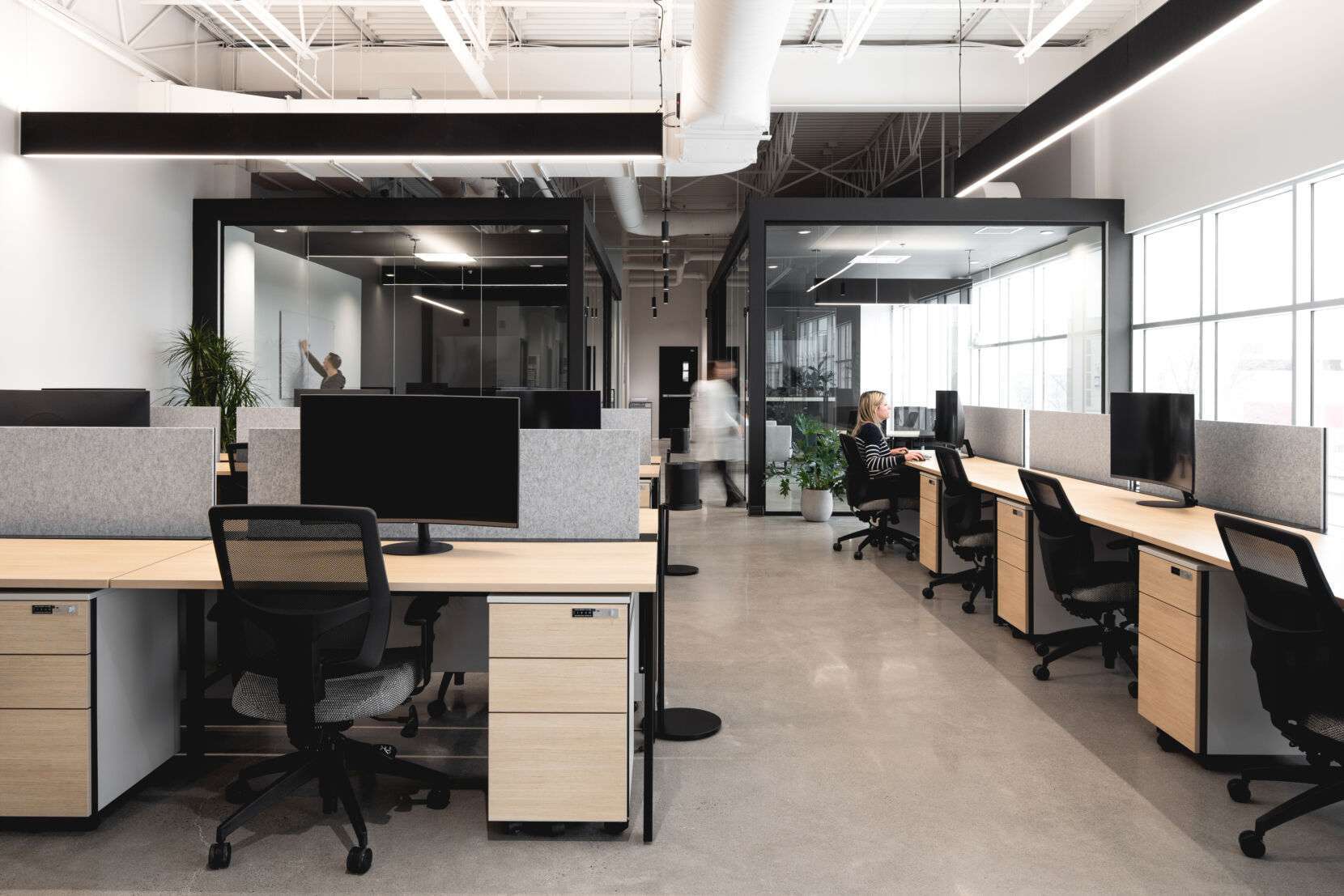
Office Furniture Rental Subscription
Engaging Employees with Office Design
Involving Employees in Office Design Decisions
The Importance of Employee Feedback
Employee feedback is invaluable when designing an office space that meets the needs and preferences of its users. Engaging employees in the design process ensures that their daily experiences and practical requirements are taken into account, leading to a more functional and satisfying work environment. When employees feel their opinions are valued, it fosters a sense of ownership and loyalty, which can enhance overall job satisfaction and productivity.
Methods for Gathering and Incorporating Feedback
There are several effective methods for gathering employee feedback on office design. Surveys and questionnaires can provide quantitative data on preferences and needs, while focus groups and workshops offer qualitative insights through direct interaction and discussion. Additionally, suggestion boxes and digital platforms can allow employees to share their ideas continuously. Once feedback is collected, it is crucial to incorporate the suggestions into the design plan transparently, updating employees on how their input is being used to shape the new office space.
Success Stories from Companies that Involved Employees in Design
Several companies have successfully involved employees in their office design processes, leading to positive outcomes. For instance, Adobe consulted with its employees through surveys and workshops when redesigning its San Francisco office. The result was a vibrant, collaborative workspace that significantly improved employee satisfaction and productivity. Similarly, LinkedIn involved its staff in the design of its Sunnyvale campus, creating diverse work zones and relaxation areas based on employee input. These success stories highlight the benefits of collaborative design and demonstrate how engaging employees can lead to innovative and effective office environments.
Enhancing Break Areas and Relaxation Spaces
The Role of Relaxation in Productivity
Break areas and relaxation spaces play a crucial role in maintaining productivity and employee well-being. Short breaks during work hours can reduce stress, prevent burnout, and refresh the mind, leading to increased focus and creativity. Providing inviting relaxation spaces encourages employees to take these necessary breaks, contributing to a healthier, more balanced work culture.
Furniture Ideas for Creating Inviting Break Areas
When designing break areas, consider incorporating comfortable and versatile furniture that invites relaxation and casual interaction. Sofas, lounge chairs, and bean bags provide cozy seating options, while coffee tables and communal tables encourage socializing. Adding elements like plants, soft lighting, and art can create a calming atmosphere. Multi-functional furniture, such as storage ottomans and modular seating, can adapt to various uses, enhancing the versatility of the space.
Examples of Innovative Relaxation Spaces
Innovative relaxation spaces can transform the work environment and significantly boost employee morale. For example, Google’s offices are renowned for their creative break areas, featuring nap pods, game rooms, and meditation spaces. Another example is the headquarters of Dropbox, which includes a rooftop garden and wellness rooms for yoga and mindfulness practices. These examples illustrate how thoughtfully designed relaxation spaces can cater to diverse needs and provide much-needed respite from work.
Flexibility and Adaptability in Office Furniture
The Need for Flexible Office Spaces in a Hybrid Model
In a hybrid work model, flexibility is key to accommodating varying work styles and schedules. Flexible office spaces can adapt to different tasks and team sizes, supporting both individual work and collaborative activities. This adaptability ensures that the office remains functional and relevant as employee needs evolve.
Furniture that Adapts to Different Work Styles and Needs
Selecting furniture that adapts to different work styles is essential for creating a versatile office environment. Modular desks and seating can be reconfigured for solo work or team meetings, while adjustable chairs and sit-stand desks cater to individual comfort preferences. Movable partitions and whiteboards can transform open areas into private workspaces or brainstorming zones as needed. Investing in multi-purpose furniture, such as tables with built-in storage or foldable desks, further enhances the adaptability of the office.
Future-Proofing Your Office Furniture
Future-proofing office furniture involves choosing pieces that can evolve with changing needs and technologies. Durable, high-quality materials ensure longevity, while modular designs allow for easy reconfiguration. Incorporating technology-friendly furniture, such as desks with integrated charging ports and cable management systems, prepares the office for future advancements. By prioritizing flexibility and durability, businesses can create a resilient office environment that supports long-term growth and adaptation.

Office Furniture Rental Subscription
Conclusion
Summarizing the Importance of Office Design in Hybrid Work
The evolution of the hybrid work model has underscored the critical role of office design in fostering a productive and engaging work environment. Throughout this article, we’ve explored the essential elements of modern office design, from the importance of natural light and ergonomic furniture to the benefits of collaborative and personalized spaces. We’ve highlighted how a welcoming office environment can boost employee morale, enhance productivity, and improve overall job satisfaction.
Creating an inviting office space is not merely about aesthetics; it significantly impacts employee retention and well-being. By incorporating employee feedback, investing in flexible and sustainable furniture, and designing spaces that reflect company culture, businesses can create a workplace that employees are eager to return to. Now more than ever, it’s crucial for businesses to recognize the profound influence of their office environment on their hybrid workforce.
Here to Help Your Business
For businesses in Gilbert, AZ, now is the time to assess your current office setup and consider how it can be improved to support the hybrid work model. Evaluate whether your office design meets the needs of your employees and fosters a welcoming atmosphere that encourages productivity and collaboration.
To assist in this process, we recommend reaching out to local office furniture suppliers and designers who specialize in creating modern, ergonomic, and sustainable workspaces. These professionals can offer tailored solutions that align with your budget and brand identity.
We also invite you to share your own tips and experiences in designing an inviting office space. Your insights can provide valuable inspiration for other businesses looking to enhance their work environments. Together, we can create offices that not only support hybrid work but also inspire and engage employees for years to come.
Ready to transform your Southeast Valley workspace and create an environment that fosters creativity, collaboration, and productivity?
Contact Interior Avenue today for a free consultation! Our team of experts will guide you through the process of selecting the perfect furniture to elevate your office and propel your Southeast Valley business to new heights.
As you consider the needs of your office, both now and in the years to come, Interior Avenue represents a strategic partner capable of supporting your journey towards creating an ideal workspace. Whether you’re a startup looking to make a mark, a growing business planning to expand, or simply in need of refreshing your current office setup, Interior Avenue offers the solutions to meet your needs efficiently and stylishly. Let Interior Avenue be your guide to a more adaptable, affordable, and aspirational office environment in the heart of the Phoenix Southeast Valley.
For those looking for swift solutions without compromising on quality or budget, consider partnering with Interior Avenue. Renowned for their fast service and affordable options, they provide an array of office furniture tailored to modern business needs. We hope this guide offers clarity and guidance in your office furniture procurement process. Making the right choice can lead to a vibrant, efficient, and comfortable workspace, promoting well-being and productivity among employees.\
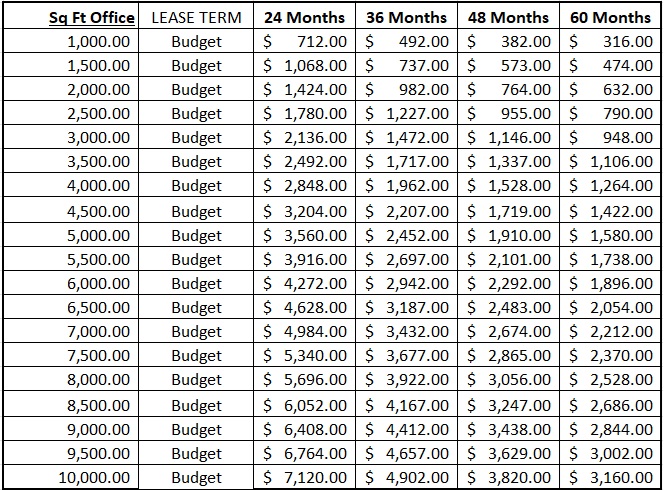
Office furniture subscription monthly model budget
We have 3 options to buy:
Purchase upfront– Pay upfront for your office furniture to be delivered and installed.
Rent to own– We help you break up the payments to help with cash flow. This service includes delivery and installation.
Subscription rental– Monthly payments that include delivery and installation and when your subscription is over we will take back the furniture and move it out of your office space for free.
https://interioravenue.net/workspace-that-tells-your-story-in-gilbert/
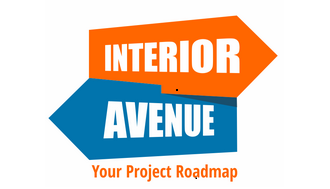
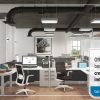




Leave a reply